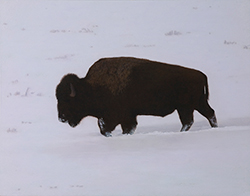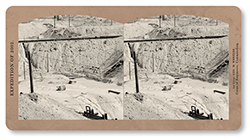December 3, 2016 - January 14, 2017
Reception: Saturday, December 3, 5-7PM
Michael Light’s work ranges from conceptual reconsiderations of NASA lunar imagery in his project Full Moon, to his aerially performative large-format works of the altered landscape. For the past two decades, Light has photographically examined the physical, cultural and mythological spaces of the American West, creating monumental and majesterial photo-books. Displayed on tilted steel plates supported by tripods, the 35x44” studio-made books are immersive, interactive journeys.
For his sixth solo show at Craig Krull Gallery, Light has re-visited the vast grid of Southern California which he had initially explored in his books, Los Angeles 02.12.04 (LA Day 2004), Los Angeles 07.27.05 (LA Night 2005) and Rancho San Pedro 04.28.06 (2006). This new project, Sidereal Rift, was made from a helicopter on the night of September 10, 2016. The glowing arteries and skeins of light float as if a web of electricity existed in a void of jet-black outer space. It is a landscape orchestrated by mankind, patterned by power structures, and becomes in fact a place purely defined by light — superseding actual physical terrain to show a complex and endless web of human construct.
Michael Light’s photographic evaluation of the arid land of the American West has its roots in the US Geological Survey expeditions of the 19th century. Participants in these efforts included legendary photographers such as Timothy O’Sullivan and William Henry Jackson, whose photographs informed Congress and the American populace living in the East about the opportunities and challenges of the West. In an adjoining gallery, Jeff Brouws’ photographic series, Desuetude: The Berkeley Pit Stereographs, visually and conceptually references this photographic history. Opened in 1955 and closed in 1982, this copper mine in Butte, Montana is both an environmental problem and a tourist attraction. Brouws has formatted his photos of the toxic pit to resemble stereographs, double image cards that create a 3-D illusion when seen through a viewer. His images are framed with the graphics and fonts that were used by 19th century stereographic publishing companies, giving them the historical context of viewing the West as a geological opportunity and wonder. The landscapes that Brouws has created, however, evidence the mistakes and misunderstandings inherent in what we didn’t see through those vintage lenses.
Finally, the gallery will present recent paintings of Yellowstone by Pamela Kendall Schiffer. The extraordinary geothermal features of this region became the focus of the Hayden Geological Survey of 1871, which included photographs by William Henry Jackson and paintings by Thomas Moran. The report that Hayden sent to Congress helped to convince the government and President Grant to create our first National Park. Schiffer’s reverential approach parallels the work of the Tonalist painters of the early 20th century who avoided majestic spectacle in favor of a more reductivist and intimate composition that evoked a poetic mood. As the artist states, “I structure my paintings in an ever simpler way. I try to pare down a scene to its essential qualities. I hope to make images that are fairly uncomplicated, while still imparting a sense of space, atmosphere and stillness, paying particular attention to the quality of light.”


